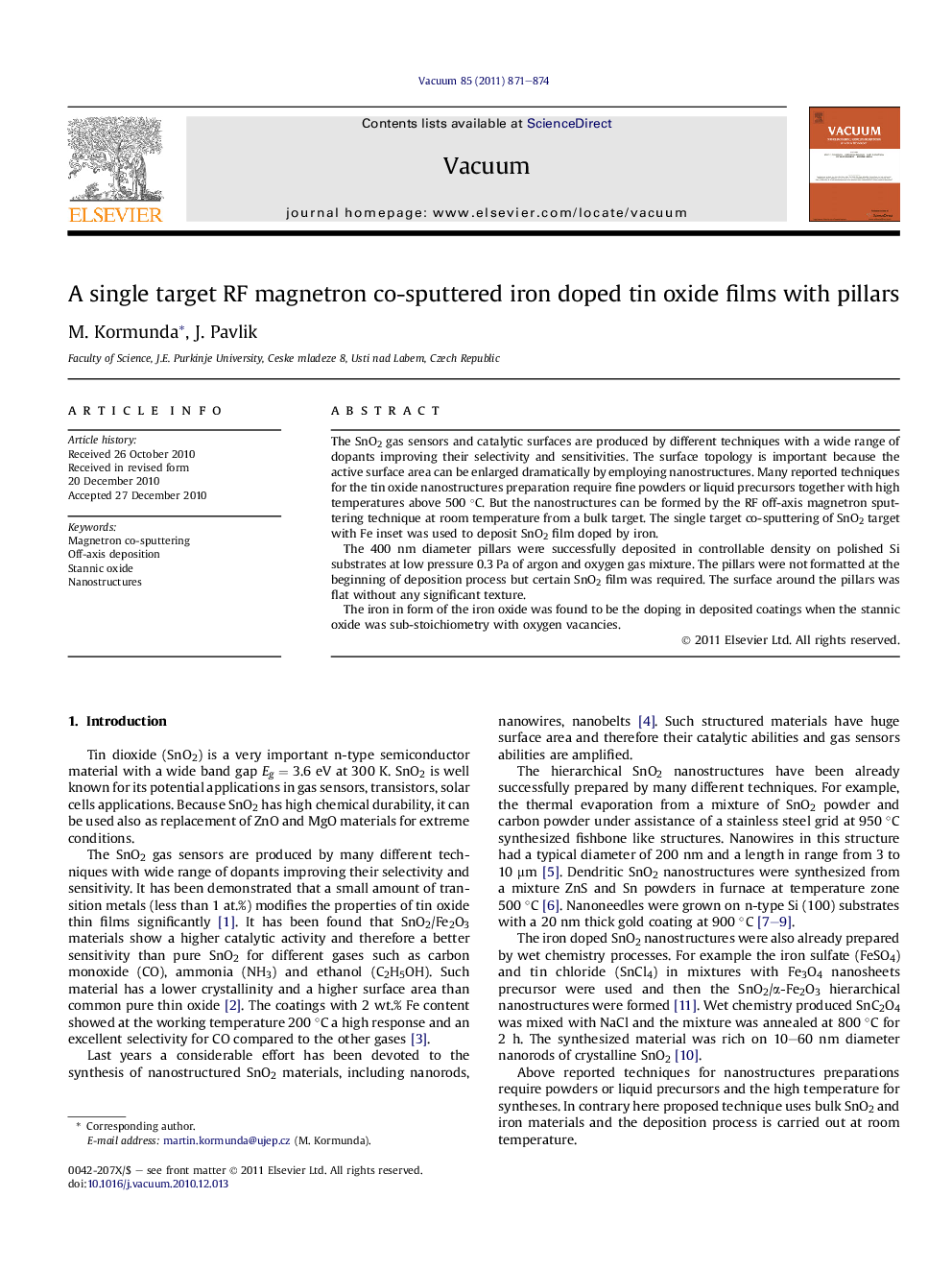| Article ID | Journal | Published Year | Pages | File Type |
|---|---|---|---|---|
| 1690634 | Vacuum | 2011 | 4 Pages |
The SnO2 gas sensors and catalytic surfaces are produced by different techniques with a wide range of dopants improving their selectivity and sensitivities. The surface topology is important because the active surface area can be enlarged dramatically by employing nanostructures. Many reported techniques for the tin oxide nanostructures preparation require fine powders or liquid precursors together with high temperatures above 500 °C. But the nanostructures can be formed by the RF off-axis magnetron sputtering technique at room temperature from a bulk target. The single target co-sputtering of SnO2 target with Fe inset was used to deposit SnO2 film doped by iron.The 400 nm diameter pillars were successfully deposited in controllable density on polished Si substrates at low pressure 0.3 Pa of argon and oxygen gas mixture. The pillars were not formatted at the beginning of deposition process but certain SnO2 film was required. The surface around the pillars was flat without any significant texture.The iron in form of the iron oxide was found to be the doping in deposited coatings when the stannic oxide was sub-stoichiometry with oxygen vacancies.
Research highlights► Room temperature deposited Fe doped SnO2 coatings with pillars 400 nm in diameter. ► The deposition time controlled number of pillars. ► The Fe doped SnO2 with oxygen vacancies.
